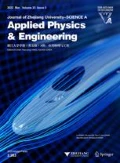Abstract
This study deals with the recycling of carbon steel slag (CSS) to produce self-consolidating concrete (SCC). Since the chemical composition of CSS is similar to that of Portland cement or blast furnace slag (BFS), it is expected to behave similarly. In the current study, the pozzolanic activity index of CSS is examined. Furthermore, the use of CSS as a pozzolanic material to partially replace Portland cement in the production of SCC is tested. We designed concrete mixtures with different water-to-cementitious material ratios (w/cm) keeping water and superplasticizer (SP) contents constant. Results showed that the design and performance of all the concrete mixtures used in this investigation were comparable to those of SCC and high performance concrete (HPC). However, compared to ordinary plain concrete (OPC), the additional CSS content increases the setting time. In the CSS mixtures set for 90 d, compressive strengths of 86%, 134% and 121% were attained as compared to the control concrete; the corresponding w/cm ratios were 0.28, 0.32 and 0.40, respectively. Verifying the soundness of the SCC for meeting the criteria for HPC, the ultrasonic pulse velocity (UPV) of CSS was found to be comparable to that of ordinary concrete. In conclusion, the recycling of CSS can be advantageously employed in the production of SCC.
Similar content being viewed by others
References
ACI Committee 211, 1993. Guide for selecting proportions for high-strength concrete. ACI Materials Journal, 90:272–283.
Al-Jabri, K., Al-Ghassani, M., Taha, R., 2002. Use of copper slag and cement by-pass dust as cementitious materials. Cement Concrete and Aggregates, 24(1):2–7. [doi:10.1520/CCA10485J]
Chiang, C.C., Chenn, Y.Y., Lin, T.Y., Hwang, C.L., 2004. The application of electric arc furnace reduction slags to high performance concrete. Journal of the Chinese Institute of Civil and Hydraulic Engineering, 16:167–178.
Esfahani, M.R., Kianoush, M.R., 2005. Bond strength of glass fibre reinforced polymer reinforcing bars in normal and self-consolidating concrete. Canadian Journal of Civil Engineering, 32(3):553–560. [doi:10.1139/l05-005]
Geiser, J., 1999. Metallurgical Slag-Create a Future Construction Material. The International Associate of Metallurgical Slag Recycle and Utilization, Beijing, p.1–8.
Hogan, F.J., Meusel, J.W., 1981. Evaluation for durability and strength development of a ground granulated blast furnace slag. Cement Concrete and Aggregates, 3(1):40–52. [doi:10.1520/CCA10201J]
Hwang, S.D., Khayat, K.H., 2008. Effect of mixture composition on restrained shrinkage cracking of self-consolidating concrete used in repair. ACI Materials Journal, 105(5): 499–509.
Koehler, E.P., Fowler, D.W., 2008. Dust-of-fracture aggregate microfines in self-consolidating concrete. ACI Materials Journal, 105(2):165–173.
Kwan, A.K.H., Ng, I.Y.T., 2008. Performance criteria for self-consolidating concrete. Transactions Hong Kong Institution of Engineers, 15(2):35–41.
Li, G., Zhao, X., 2003. Properties of concrete incorporating fly ash and ground granulated blast-furnace slag. Cement and Concrete Composites, 25(3):293–299. [doi:10.1016/S0958-9465(02)00058-6]
Luxán, M.P., Sotolongo, R., Dorrego, F., Herrero, E., 2000. Characteristics of the slags produced in the fusion of scrap steel by electric arc furnace. Cement and Concrete Research, 30(4):517–519.
Mihashi, H., Yan, X., Arikawa, S., 1995. Strength Properties and Frost Damage Resistance of High Performance Concrete Using Blast Furnace Slag and Silica Fume. Proceedings of the Fourth Weimar Workshop on High Performance Concrete, Germany, p.195–204.
Monshi, A., Asgarani, M.K., 1999. Producing Portland cement from iron and steel slag and limestone. Cement and Concrete Research, 29(9):1373–1377. [doi:10.1016/S0008-8846(99)00028-9]
Paczkowski, P., Kaszynska, M., 2007. Self-consolidating Concrete for On-site Bridge Applications. International Conference Organised by the Institution of Civil Engineers, p.312–320.
Peng, Y.C., Huang, C.L., 2009. Engineering properties of sintered waste sludge as lightweight aggregate in a densified Concrete mixture. Journal of Chongqing University (English Edition), 8(4):231–238.
Peng, Y.C., Hwang, C.L., 2010. The concrete dense packing model and engineering properties of aggregate concrete with different densities. Journal of University of Science and Technology Beijing, 32(3):366–369.
Roy, D.M., Idorn, G.M., 1982. Hydration, structures, and properties of blast furnace slag cements, mortars, and concrete. ACI Journal Proceedings, 82:444–457.
Sakuraya, T., 1999. The Utilizing Condition of Metallurgical Slag and Steel Slag for Japanese Refinery Steel Industry. The International Associate of Metallurgical Slag Recycle and Utilization, Beijing, p.15–20.
Schindler, A.K., Barnes, R.W., Roberts, J.B., Rodriguez, S., 2007. Properties of self-consolidating concrete for prestressed members. ACI Materials Journal, 104(1): 53–61.
Whitcomb, B.L., Kiousis, P.D., 2009. Development of self-consolidating concrete for thin wall applications including validation. Journal of Materials in Civil Engineering, 21(10):587–593. [doi:10.1061/(ASCE)0899-1561 (2009)21:10(587)]
Wu, X.Q., Zhu, H., Hou, X.K., Li, H.S., 1999. Study on steel slag and fly ash composite Portland cement. Cement and Concrete Research, 29(7):1103–1106. [doi:10.1016/S0008-8846(98)00244-0]
Zhang, M.H., Bilodeau, A., Malhotra, V.M., Kim, K.S., Kim, J.C., 1999. Concrete incorporating supplementary cementing materials: effect on compressive strength and resistance to chloride-ion penetration. ACI Materials Journal, 96:181–189.
Author information
Authors and Affiliations
Corresponding author
Additional information
Project supported by the Taiwan National Science Council (No. NSC-98-0410)
Rights and permissions
About this article
Cite this article
Peng, YC., Hwang, CL. Carbon steel slag as cementitious material for self-consolidating concrete. J. Zhejiang Univ. Sci. A 11, 488–494 (2010). https://doi.org/10.1631/jzus.A0900635
Received:
Revised:
Published:
Issue Date:
DOI: https://doi.org/10.1631/jzus.A0900635




